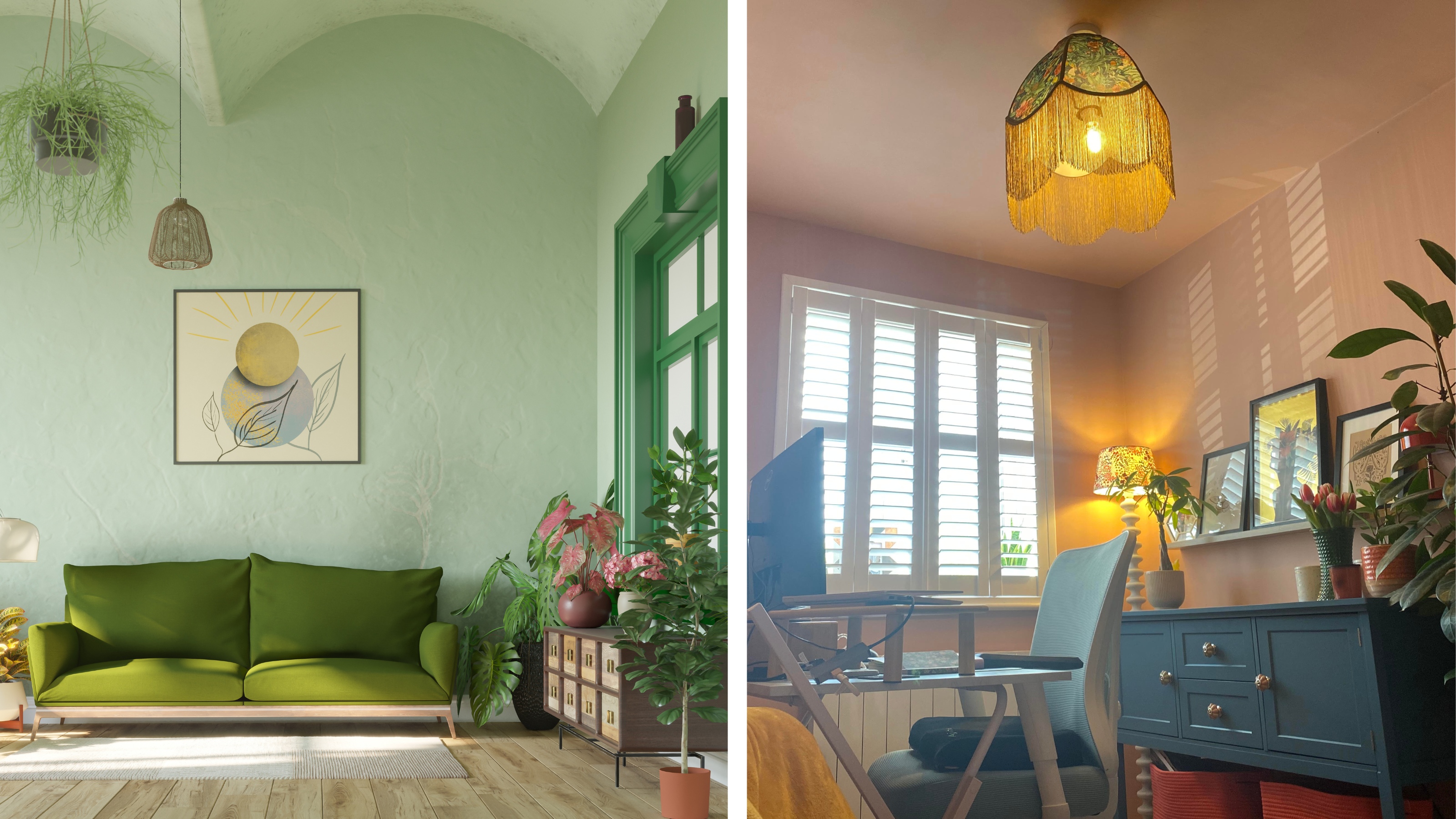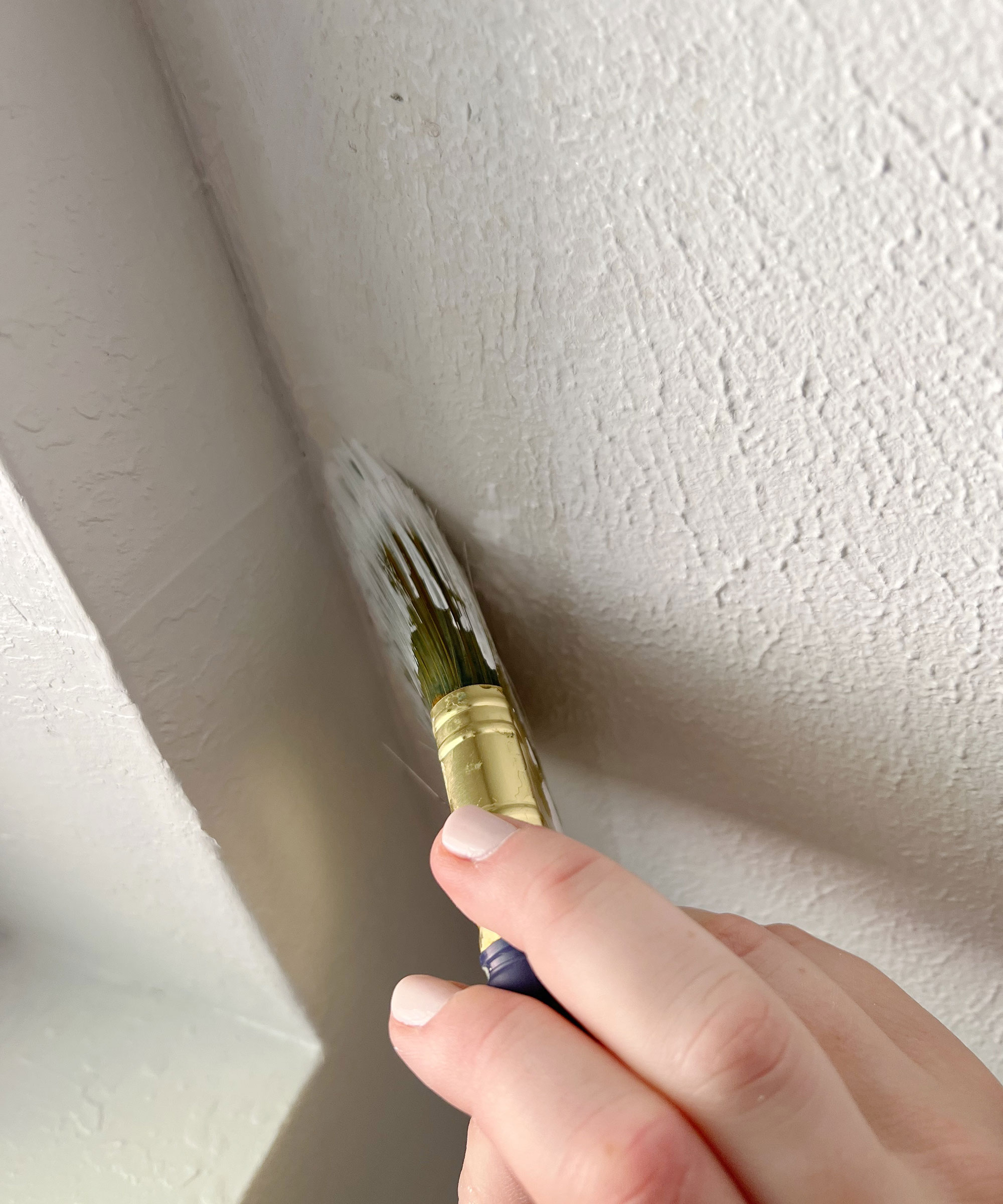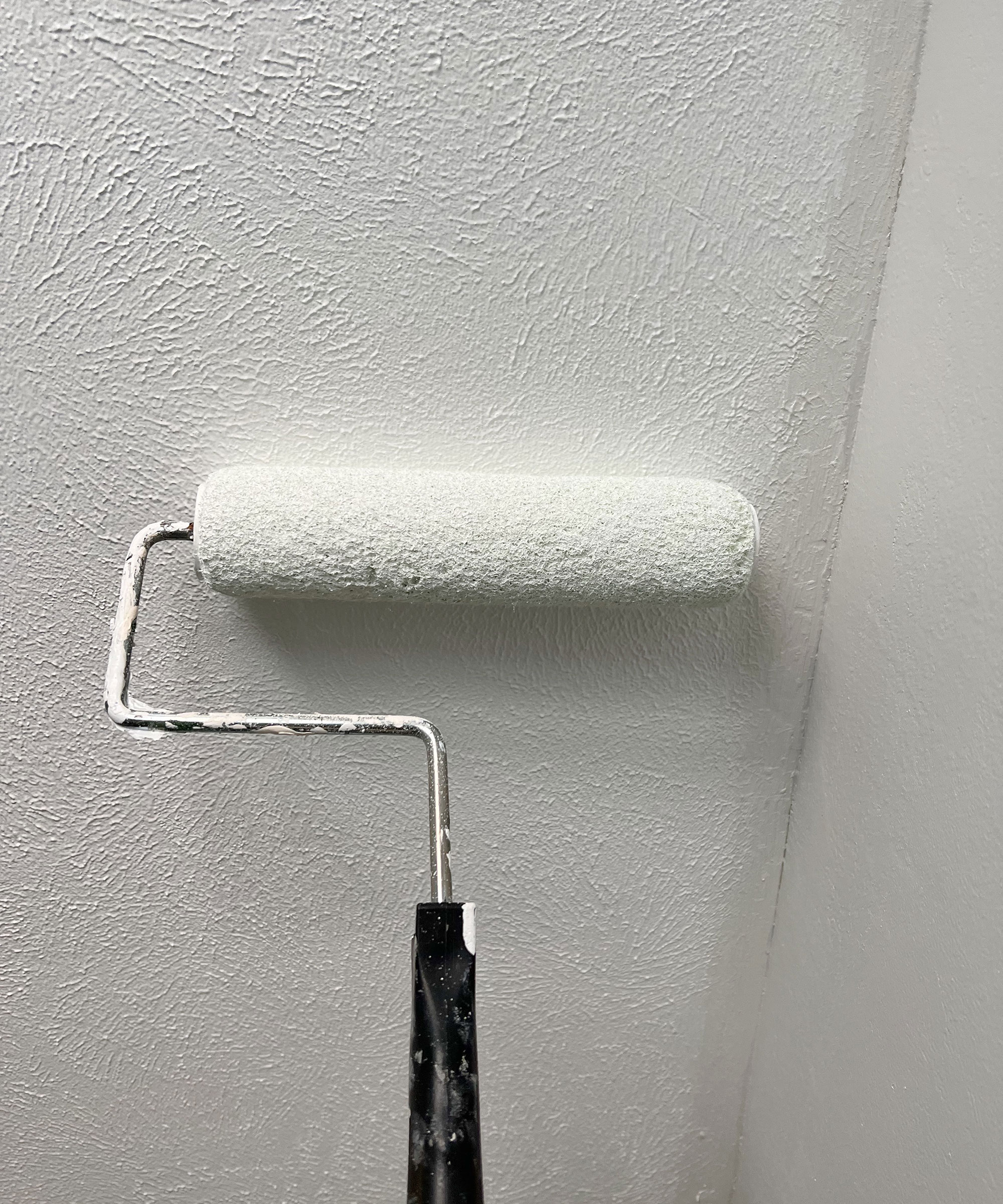How to paint a ceiling in five easy steps for dramatic visual impact — no matter how small your space
Add serious style to any room by learning how to paint a ceiling. We've got all the pro tips, equipment list and the expert know-how to get you on your way


Learning how to paint a ceiling yourself can lead to dramatic style transformations that will wow guests — even in the smallest of rooms, and you won't need to shell out for a professional to do it for you.
Though you may think painting the ceiling is a job best saved for a decorator, it's actually a straight forward DIY task when you know how to do it. We spoke to expert painters for their five step process, a list of the essential items to add to your shopping list before you start, and top tips for color success.
Brush your way to beautiful rooms with colorful ceiling ideas and add that fifth wall to the roster with confidence. Ready to take the plunge and get painting? We're all set to show you exactly how.
How to paint a ceiling like a pro in five simple steps
Once you've picked your favorite color trends for small spaces, you'd be forgiven for chickening out and leaving the ceiling untouched. But we promise, the effort and bravery employed when painting a ceiling will be totally worth it.
Where our experts have suggested products, our in-house shoppers have found matching buys to make your DIY paint job a breeze.
All prices were correct at the time of publishing.
The items you'll need to paint a ceiling
- Old bed sheets, dust sheets or plastic tarp to protect furniture and flooring. Try the highly-rated The Home Depot's Painter's Plastic Sheeting.
- Your chosen ceiling paint. We love Early Sunset from Benjamin Moore, a bright neutral with a hit of pink.
- Sugar soap for cleaning. We recommend Amazon's Overall Pick of non-flammable sugar soap from the Alcolin Store.
- Painter's tape such as Frog Tape, available at Lowe's. It's great at stopping unwanted paint seepage under the edges.
- Ladder. We recommend this foldable Kobalt three-step ladder from Lowe's for ease of use and storage in small spaces.
- A small to medium-sized paint brush, angled brush and roller with handle. A kit such as Amazon's Bates painting set will come in handy.
- A telescopic roller arm (try Lowe's Telescopic Extendable Roller Arm)
- You might also opt for overalls and protective glasses such as Amazon's cheap and cheerful Neiko goggles to stop paint splatter going where it shouldn't.
Step 1: Prep the ceiling and room
Before you add the best paint color for a small living room to the ceiling, use old bed linen or plastic sheeting to cover up floors and any furniture you haven't been able to move out of the room.
Get small space home decor ideas, celeb inspiration, DIY tips and more, straight to your inbox!
Pop some painter's tape around light fixtures and press down to seal the gap, then remove paintings from walls and curtains off rails to prevent splatter ruining your furnishings.
If you have crown molding, you might opt to use painter's tape along the edges to prevent paint going on them by accident, or you might take the plunge and color drench them whilst you're painting a ceiling. You're already being bold by taking a roller to the fifth wall so why stop there, we say!
Then, pick the color that works for you and most essentially, the right kind of paint.
Anna Franklin, interior designer and founder of Stone House Collective says, "Many people don’t realize there is a difference between wall paint and ceiling paint. Ceiling paint is superior for this job as wall paint is thin with low viscosity, meaning it can easily drip from the ceiling when applied. Ceiling paint is durable, low-sheen, and requires little to no maintenance."
Most people opt for white to brighten a room, but a pop of beautiful color can bring brilliant visual interest to the space and draw the eye upwards, making the space seem taller than it actually is. Try Benjamin Moore's Early Sunset, a soft neutral with a hint of pink, to dip your toe into colorful ceiling confidence.
Step 2: Clean wall and adjoining ceiling debris
Remove cobwebs with a kitchen towel and remove dust with a hoover using your soft brush extension. If there's any crumbling plaster, use a screwdriver to remove loose debris. A hard-bristled brush such as Amazon's Rubbermaid Scrub Brush will work wonders, too.
Zoe Warren, an interior expert at PriceYourJob.co.uk recommends sanding if your ceiling is not textured but not completely smooth.
She says, "Sanding is of the most important things you need to do before painting an untextured ceiling, as it will help smooth out any bumps and get rid of crud stuck on the ceiling. When sanding, you should use a 100-grit drywall sanding paper (we recommend Fandeli's 100-grit sheets from Amazon) to create a smooth surface that is perfect for painting."
For perfect paint priming, use a sugar soap solution (such as Walmart's Everbuild Sugar Soap Concentrate) with a long-handled sponge mop to clean your ceiling. Your neck and shoulders will thank you for skipping the hand held sponge.
Nina Lichtenstein, founder and principal home designer at Nina's Home Design adds, "Don't forget to fill in cracks or holes in the ceiling and sand down rough patches for a smooth surface.."
If you're changing the color of your ceiling from dark to light, consider a high-quality coat of flat primer to ease the transition.
Step 3: Hand-paint edges and corners with a brush

Cut in the area where the top of the wall meets the ceiling with a high-quality trim brush such as Wooster’s short angle sash brush, available on Amazon as well as around any ceiling fixtures.
Nina advises, "Begin by 'cutting in' around the edges of the ceiling using a good angled brush. Dip the brush into the paint and carefully outline the perimeter of the ceiling along the walls and corners. This helps create neat lines and prevents paint overlap with the roller. Take your time and work in small sections for precision."
Using a good angled brush can eliminate the need to tape off the ceiling, but you will need a steady hand. A paint edger gadget (we recommend the SHUR-LINE Paint Edger Pro from Amazon) will make quick work of this task.
Anna adds, "When painting, be sure to hold the brush like a pen, load it with paint, and then tap the brush on the side of the bucket to remove any excess paint that may drip off while painting (you don’t want to have too much paint on the brush at a time)."
It's advised to do this on the same day you roller the rest of the ceiling to ensure a smooth finish. If painting onto freshly plastered ceilings, consider a layer of quality primer paint first.
Step 4: Use a paint roller on the rest of the ceiling

Now the tricky nooks and crannies have been covered, the real fun of painting begins.
"Once you’re done getting all of the tight spots covered, you are ready to use the paint roller," says Anna. "For a flat ceiling without texture, use a nine-inch roller and 3/8 inch nap. For a textured ceiling, use a nine-inch roller with a half inch nap."
This is where using an extension pole for your roller (try the Bates extension pole from Amazon) will come in super handy and help you swerve climbing up and down to reload your roller or paint the next section.
Working in small section, paint in a zigzag shape to neatly overlap the last stroke with each movement. Allow drying time before repeating with a second coat.
Nina recommends trying the "W" technique. She says, "Paint in overlapping W or M-shaped patterns to ensure even coverage and minimize streaks. Start rolling the paint in one direction, then overlap with strokes in the opposite direction to blend seamlessly.
"Work in manageable sections to keep a wet edge and avoid visible lines. With a little effort and know-how, you'll have a beautifully painted ceiling that enhances your home for years to come."
Don't forget to take breaks and keep the room well-ventilated.
Anna advises,"If your ceiling has a heavy texture or is a “popcorn” ceiling (yes it really can be painted in a day) be mindful of the amount of paint you are applying. If you saturate a popcorn ceiling too much, it can cause damage to the texture and potentially make the ceiling fall.
"Although a thick layer of paint will be needed, practice before starting to get a good feel of how much paint is on your roller or paintbrush. With preparation beforehand, you can ensure that you apply the correct amount of paint and don’t cause long-term damage."
Then, let the paint dry as long as advised on the manufacturer's information label.
Step 5: Touch up with a brush
Once your paint is dry, remove your painter's tape and spot check your handiwork.
Anna says, "Carefully remove your tape and coverings, double-checking for any inconsistent areas of paint coverage as you go. If you missed any covered spots, use a paint brush for touch-ups."
Finally, remove your sheets or plastic covers, replace furniture and decor, then step back and enjoy your dramatically madeover ceiling.
Now you've been bold and painted one ceiling, delve into the best paint colors for small bathrooms and plan your next DIY project with ease. You'll be a dab hand and painting radiators before you know it!

Dori Turner writes blog posts and feature articles on affordable design and DIY from her home in the heart of Oklahoma. She has a passion for teaching others how they can transform their home on a budget.
- Punteha van TerheydenEditor
- Camille Dubuis-WelchFormer Deputy Editor